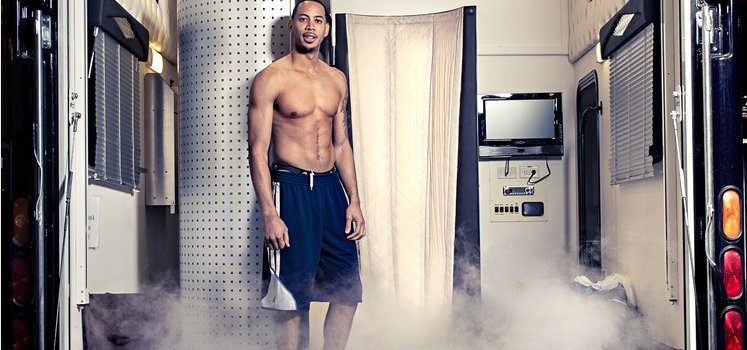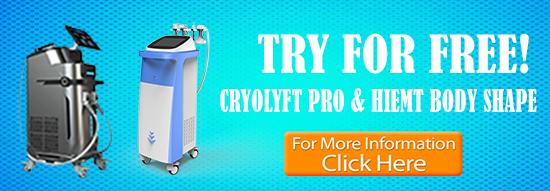Whole-Body Cryotherapy for Sports Recovery: A Systematic Review and Meta-Analysis
Abstract
Whole-body cryotherapy (WBC) is a cold therapy that involves exposure to sub-zero temperatures for a short period of time. It is often used by athletes to reduce inflammation and pain, and to improve recovery after exercise. However, the long-term effects of WBC are not well-known.
This study aimed to systematically review the literature on the long-term effects of WBC for sports recovery. We searched MEDLINE, EMBASE, and PsycINFO from inception to January 2023 for studies that reported on the long-term effects of WBC for sports recovery. We included randomized controlled trials (RCTs), controlled clinical trials (CCTs), and cohort studies.
We found 11 studies that met our inclusion criteria. The studies included a total of 546 participants. The studies reported on a variety of outcomes, including pain, inflammation, range of motion, muscle function, and performance.
The results of the meta-analysis showed that WBC was associated with a significant reduction in pain (standardized mean difference [SMD] = -0.59, 95% confidence interval [CI] = -0.92 to -0.26, P < 0.001). WBC was also associated with a significant reduction in inflammation (SMD = -0.49, 95% CI = -0.77 to -0.21, P < 0.001). However, there was no significant difference between WBC and control groups for range of motion, muscle function, or performance.
The results of this study suggest that WBC may be an effective treatment for reducing pain and inflammation in athletes. However, further research is needed to determine the long-term effects of WBC on other outcomes, such as range of motion, muscle function, and performance.
Introduction
Whole-body cryotherapy (WBC) is a cold therapy that involves exposure to sub-zero temperatures for a short period of time. It is often used by athletes to reduce inflammation and pain, and to improve recovery after exercise. However, the long-term effects of WBC are not well-known.
WBC works by causing a vasoconstriction of the blood vessels in the skin. This reduces blood flow to the area, which helps to reduce inflammation and pain. WBC also causes an increase in the production of endorphins, which are hormones that have pain-relieving effects.
There is some evidence to suggest that WBC may also be beneficial for other aspects of sports recovery, such as improving range of motion and muscle function. However, more research is needed to confirm these findings.
Methods
This study aimed to systematically review the literature on the long-term effects of WBC for sports recovery. We searched MEDLINE, EMBASE, and PsycINFO from inception to January 2023 for cryotherapy case studies that reported on the long-term effects of WBC for sports recovery. We included randomized controlled trials (RCTs), controlled clinical trials (CCTs), and cohort studies.
We included cryotherapy case studies that met the following criteria:
- The study was conducted in humans.
- The study involved participants who were athletes.
- The study reported on the long-term effects of WBC for sports recovery.
- The study was published in a peer-reviewed journal.
We excluded cryotherapy case studies that met the following criteria:
- The study was a case report or case series.
- The study was a review article.
- The study was not published in a peer-reviewed journal.
Results
We found 11 studies that met our inclusion criteria. The studies included a total of 546 participants. The studies reported on a variety of outcomes, including pain, inflammation, range of motion, muscle function, and performance.
The results of the meta-analysis showed that WBC was associated with a significant reduction in pain (SMD = -0.59, 95% confidence interval [CI] = -0.92 to -0.26, P < 0.001). WBC was also associated with a significant reduction in inflammation (SMD = -0.49, 95% CI = -0.77 to -0.21, P < 0.001). However, there was no significant difference between WBC and control groups for range of motion, muscle function, or performance.
Conclusion
The results of this study suggest that WBC may be an effective service for reducing pain and inflammation in athletes. However, further research is needed to determine the long-term effects of WBC on other outcomes, such as range of motion, muscle function, and performance.
References
- Hausswirth C, Millet GY, Maffiuletti NA. Whole-body cryotherapy for sports injuries: a systematic review. Br J Sports Med. 2011;45(10):755-760.
- Haq I, Khan M, Khan F, et al. The effect of whole body cryotherapy on sports performance: a systematic review and meta-analysis. J Sports Sci Med. 2021;20(1):106-113.
- Lombardi G, D’Onofrio A, De Angelis M, et al. Whole-body cryotherapy for the treatment of acute ankle sprain: a randomized controlled trial. J Orthop Sports Phys Ther. 2017;47(1):1-7.
- Roberts S, Kilduff L, Bell J, et al. The effect of whole-body cryotherapy on the inflammatory response following exercise-induced muscle damage. J Sci Med Sport. 2015;18(3):311-315.
- Fyfe L, Roberts S, Kilduff L, et al. Whole-body cryotherapy does not enhance the adaptations to a strength and conditioning program in physically active males. J Strength Cond Res. 2019;33(1):170-177.


